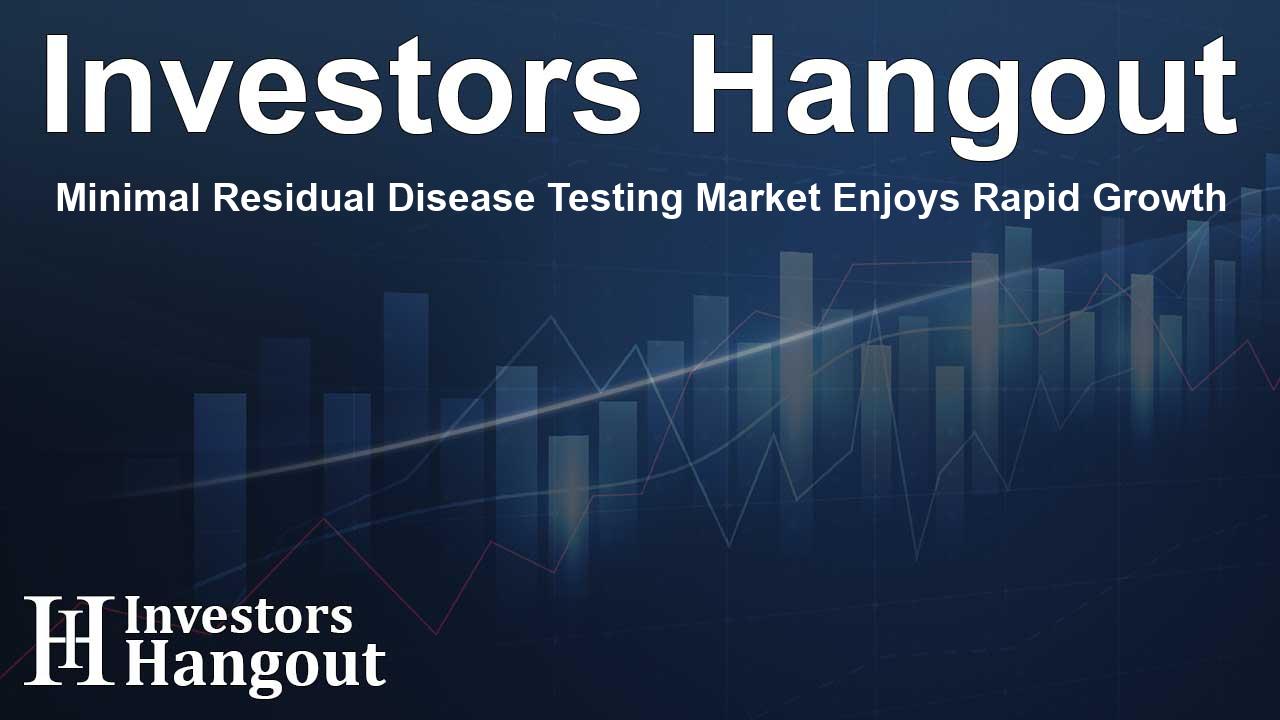Minimal Residual Disease Testing Market Enjoys Rapid Growth

Overview of the Minimal Residual Disease Testing Market
The Minimal Residual Disease (MRD) Testing market is experiencing significant growth, projected to reach USD 5.74 billion by 2032. This surge is attributed to advancements in precision oncology, which emphasizes the critical nature of detecting residual cancer cells after treatment. The ability to manage cancer more effectively hinges on identifying these cells to predict relapse and guide further therapies. Demand for accurate MRD testing has significantly increased, driven by advancements in molecular diagnostics and the rise of liquid biopsy technologies.
Market Growth Drivers and Projections
As per recent analysis, the MRD testing market, valued at USD 2.16 billion in 2023, is anticipated to grow at a compound annual growth rate (CAGR) of 11.50% from 2024 to 2032. This growth is predominantly fueled by increasing demand for precision oncology tools, the clinical validation of MRD assays, and the adoption of next-generation sequencing (NGS) technologies. In the United States, the market alone is expected to rise from USD 0.65 billion in 2023 to USD 1.58 billion by 2032, showcasing a CAGR of 10.38%. This reflects a broader global trend towards more personalized cancer treatments, enhancing patient care.
Understanding Minimal Residual Disease Testing
MRD testing plays a pivotal role in oncology by allowing healthcare providers to detect microscopic levels of cancer cells that remain post-treatment. This capability presents a key advantage in predicting potential relapses, allowing for timely interventions. The field is marked by rapid technological advancements, with increasing investments from diagnostic companies and pharmaceutical firms aiming to improve MRD detection capabilities. This ongoing innovation is set to transform the landscape of cancer management, leading to better outcomes for patients.
Key Players in the MRD Testing Market
Several major players are actively shaping the MRD testing market including Exact Sciences Corporation with their Oncotype MAP, GRAIL, LLC focusing on developing MRD applications through Galleri, and Veracyte, Inc. Other notable companies include Natera, Inc. with Signatera, Guardant Health's Guardant Reveal, and F. Hoffmann-La Roche Ltd with their AVENIO Tumor Tissue Analysis system. These companies represent a diverse array of solutions that cater to the growing need for accurate MRD testing.
Market Segmentation Analysis
The MRD testing market can be segmented based on technology, cancer type, and business type. Flow cytometry dominates the market, capturing over 40% by providing a cost-effective, high-throughput solution widely adopted in clinical labs. Meanwhile, next-generation sequencing (NGS) is the fastest-growing segment due to its unparalleled sensitivity and precision.
Breakdown by Cancer Type and Business Type
When considering cancer types, hematological malignancies account for the largest share in MRD testing, primarily because of their clearer molecular targets. The hospitals and specialty clinics sector holds the most substantial share in terms of business type, with diagnostic laboratories also gaining traction as they enhance their in-house capabilities.
Regional Insights and Global Trends
North America emerged as the leading region in the MRD testing market in 2023, representing approximately 39.9% of the global market. This strong performance is supported by early adoption of precision diagnostics, a thriving healthcare ecosystem, and rigorous research investments aimed at integrating MRD testing into standard oncology care. Conversely, the Asia-Pacific region is expected to be the fastest-growing area, driven by increasing cancer rates, expanded access to healthcare, and heightened investments in clinical genomics.
Recent Advancements in MRD Testing
Recent developments in the MRD testing market underline the commitment to innovation. For instance, Adaptive Biotechnologies received a breakthrough designation from the FDA for their clonoSEQ MRD test, enhancing non-invasive testing methodologies. Meanwhile, Invivoscribe has introduced kits standardized for MRD testing in acute myeloid leukemia (AML), utilizing both flow cytometry and NGS platforms to further improve diagnostic accuracy.
Frequently Asked Questions
What is the current market size of Minimal Residual Disease Testing?
The market was valued at USD 2.16 billion in 2023 and is projected to reach USD 5.74 billion by 2032.
What drives the growth of the MRD Testing market?
Key drivers include advancements in precision oncology, increased clinical validation of MRD assays, and the integration of NGS technologies.
Which technology is leading in the MRD Testing market?
Flow cytometry is currently the largest segment in MRD testing, contributing over 40% of the market share globally.
What role does MRD Testing play in cancer treatment?
MRD Testing helps detect residual cancer cells post-treatment, which is crucial for relapse prediction and guiding further therapy choices.
How is the market expected to grow in the Asian region?
The Asia-Pacific region shows significant growth potential due to rising cancer incidences, expanding healthcare access, and increased investment in clinical genomics.
About The Author
Contact Dylan Bailey privately here. Or send an email with ATTN: Dylan Bailey as the subject to contact@investorshangout.com.
About Investors Hangout
Investors Hangout is a leading online stock forum for financial discussion and learning, offering a wide range of free tools and resources. It draws in traders of all levels, who exchange market knowledge, investigate trading tactics, and keep an eye on industry developments in real time. Featuring financial articles, stock message boards, quotes, charts, company profiles, and live news updates. Through cooperative learning and a wealth of informational resources, it helps users from novices creating their first portfolios to experts honing their techniques. Join Investors Hangout today: https://investorshangout.com/
The content of this article is based on factual, publicly available information and does not represent legal, financial, or investment advice. Investors Hangout does not offer financial advice, and the author is not a licensed financial advisor. Consult a qualified advisor before making any financial or investment decisions based on this article. This article should not be considered advice to purchase, sell, or hold any securities or other investments. If any of the material provided here is inaccurate, please contact us for corrections.
